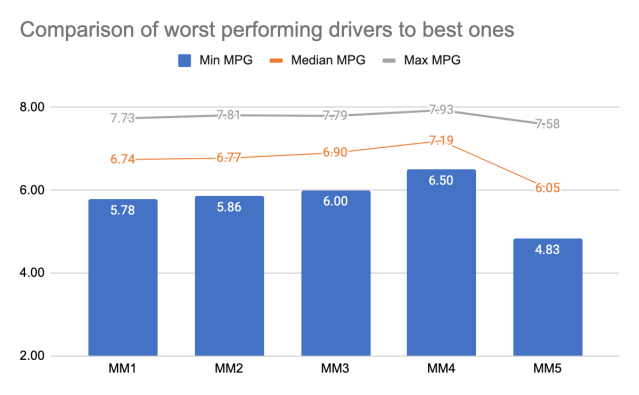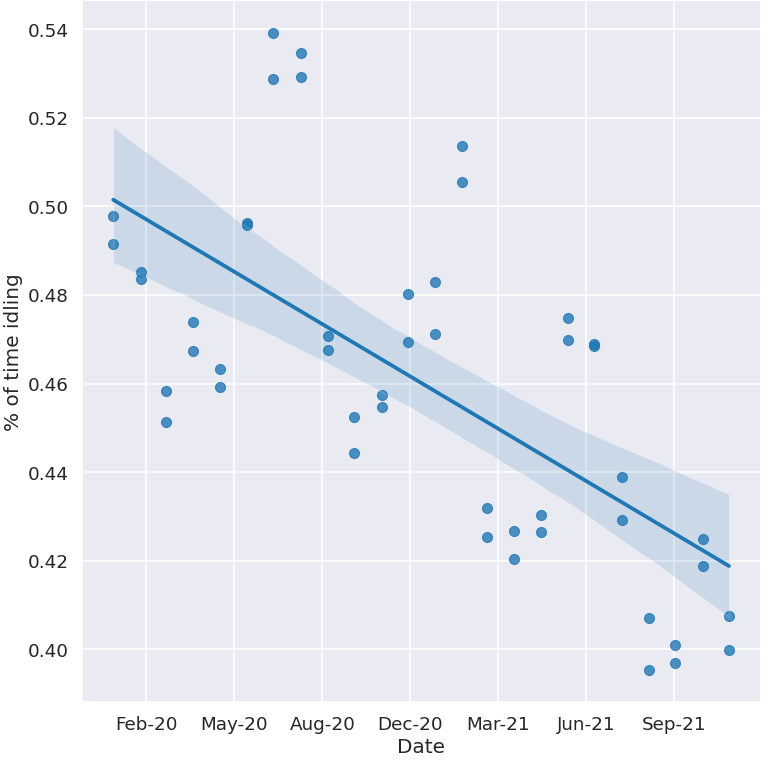There’s no better example of a conundrum than the transportation industry, the economy, and the environment. Without trucks, economies suffer. With trucks and the emissions they create, the environment suffers. From an economic perspective, in 2019 U.S. transportation services in air, rail, truck, and water contributed $237.7 billion to the GDP. Trucking contributed the largest amount of all the freight modes, at $368.9 billion. On the environmental side, in 2018 freight trucks contributed 23% of the greenhouse gas emissions.1 Transportation as a whole contributed 28% of those emissions.2
There are numerous ways the transportation industry is doing its part to keep economies healthy and reduce emissions. One area any type of fleet or driver can contribute to the reduction of greenhouse gas is to use less gas. To use less gas means fleet managers need to understand where each gallon goes and identify areas to reduce waste to improve environmental sustainability.
Why fleet fuel visibility matters
Fuel is expensive, especially these days, and fuel usage is harmful to the environment. Emissions from the trucking industry are responsible for 8% of the total annual carbon emissions in North America, with freight comprising nearly a quarter of total emissions. While the promise of electric vehicles and alternative fuel vehicles enjoy positive news coverage, the reality is that these technologies are five to 10 years out from major adoption within the industry.
In the fleet management business, margins are thin and operating costs are high. After driver wages, fuel costs make up to 25% of a fleet’s operating costs.
According to the latest figures available from the American Trucking Associations (ATA) in 2019:
- About 37.9 million trucks were registered and used for business purposes, excluding government and farm.
- Trucks used for business purposes consumed 45.6 billion gallons of fuel.
- That’s 36.5 billion gallons of diesel fuel and 9.1 billion gallons of gasoline.
Looking at Motive’s own data from over 400,000 vehicles across thousands of unique make/models, our customers consumed over 2 billion gallons of fuel last year.
Challenges fleets face around fuel economy
Challenges fleets face around fuel efficiency include:
- Lack of visibility into driving behaviors affecting fuel performance
- Lack of standards covering good fuel economy vs. bad (i.e., benchmarking)
- Inability to determine causes of poor fuel performance
- Inability to identify specific coachable behaviors
Factors affecting fuel efficiency
Driver behavior
Driver behavior makes a big difference when it comes to fuel efficiency. In a review of Motive’s in-network data, we found a staggering >20% difference across the top and bottom performing drivers on the same make/model after excluding outliers.

Motive data shows that fleets with the top fuel savings have 40% less hard braking incidents and 79% less hard acceleration events per hour when compared to the rest.
RPM and speed
RPM and speeding have the biggest impact on fuel efficiency. After normalizing for road conditions, Motive data showed that heavy-duty vehicles experience a significant fuel economy drop once the RPM value crosses 1400 RPM. (For medium-duty vehicles, 1800 RPM, and for light-duty vehicles, 1600 RPM.)
When drivers limit how often they rev the engine, they can significantly reduce fuel consumption.
Speed is a factor too. For most vehicles, the optimal speed for max fuel efficiency is 55-60 mph. Generally, for heavy-duty vehicles, after 60 mph, fuel efficiency drops by about 1% for every 1 mph over. So, a vehicle running at 70 mph would have a 10% drop in fuel efficiency compared to one driving at 60 mph. To optimize fuel efficiency, drivers of heavy-duty vehicles need to understand that when they’re traveling faster than a pre-specified highway speed, they’re wasting fuel.
Vehicle condition
Keep fleet vehicles in top condition to avoid unnecessary fuel waste. Common vehicle conditions that negatively impact fuel consumption include:
- A poorly tuned engine
- Improperly aligned or inflated tires
- Brake drag
- Dirty air filter
A simple and effective way to keep your vehicles in tip-top shape is to use fleet management software and vehicle diagnostic data to identify which vehicles are in need of maintenance and replacement.
Route and environment
The route a fleet vehicle takes will play a role in fuel efficiency. If the driver encounters traffic or spends time idling for other reasons, that will negatively impact fuel consumption. Making many short trips can also reduce fuel economy. Whether or not a vehicle is loaded will impact fuel economy, so efficient routing makes sense.
The environment can also factor. For example, driving on mountainous terrain or on unpaved roads can reduce fuel efficiency. Cold weather can also make your engine less efficient until it warms up.
How Motive’s Fuel Hub helps fleets
Fleet owners need a holistic view of their fleet’s fuel usage. Motive’s Fuel Hub delivers the data and insights that improve fuel efficiency, along with the reporting and tracking needed to run a more streamlined operation.
In a recent in-house assessment3 of Motive’s top Fuel Hub users, we found that these fleets on average:
- Improved MPG by 13%.

- Reduced idling time by 20%.

In 2021 alone, Fuel Hub improved fuel efficiency and saved Motive’s top fleets an estimated 3 million gallons of fuel.
Individual fleets have also improved fuel efficiency and driving behavior.
- A fleet running an annual distance of about 4.9 million miles saw 15% improvement in miles per gallon, with 27% reduction in idling time and 60% reduction in hard accelerations.
- A fleet running an annual distance of about 1.9 million miles saw 13% improvement in miles per gallon, with 15% reduction in idling time and 94% reduction in hard accelerations.
- A fleet running an annual distance of about 2.6 million miles saw 9% improvement in miles per gallon, with 15% reduction in idling time and 86% reduction in hard accelerations.
Fuel Hub provides a holistic view into your fleet’s fuel consumption. Identify trends, know what to change to improve, and benchmark performance against Motive’s extensive network of 600,000 vehicles across North America. Fuel Hub surfaces specific wasteful driver behaviors, including over RPM and higher driving speed, so you know exactly where you need to focus your efforts when coaching. Also, the Fuel Hub leaderboard can be used to identify and retain your top drivers and reward them for their fuel efficiency.
Using the Fuel Hub, fleets can better manage vehicle inventory by keeping the more efficient vehicles and retiring or repairing the gas guzzlers.
Motive customers save money and contribute to a cleaner, greener environment. Part of Motive’s mission is to help the trucking industry reduce about 10% of their total fuel consumption and save billions of dollars. From a sustainability standpoint, this means potentially reducing 20 million tons of CO2 emissions. To put that in perspective, that’s the equivalent of planting 900 million trees — or the number of adult trees in Denali national park.




